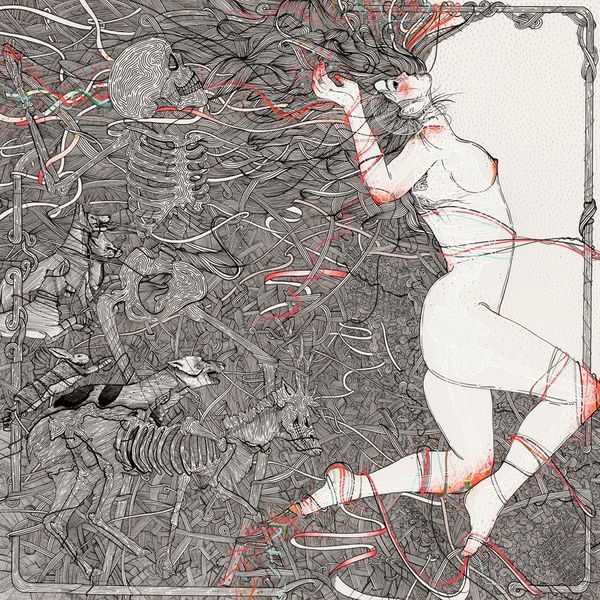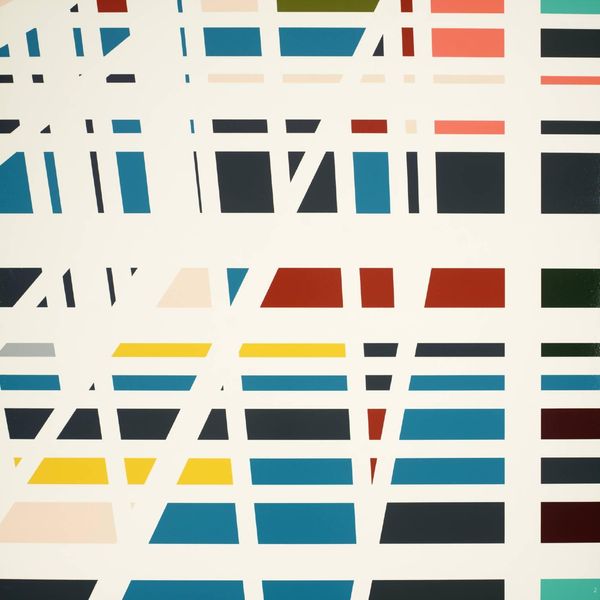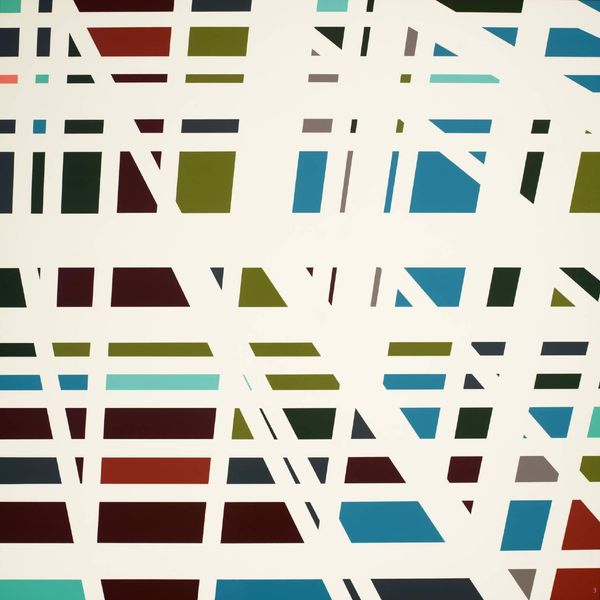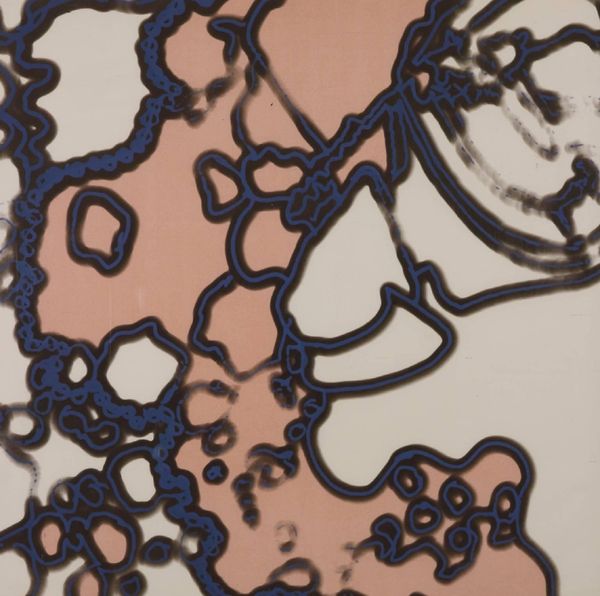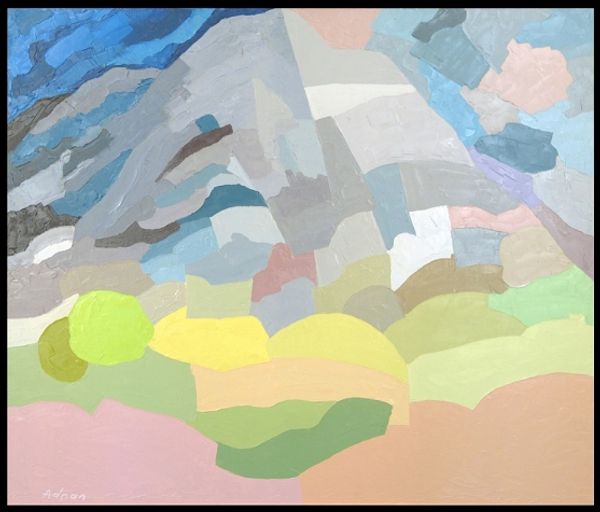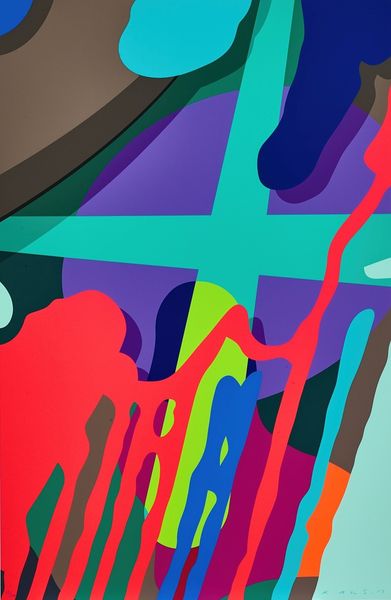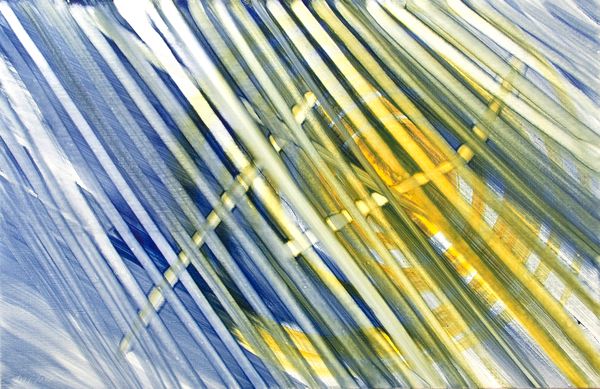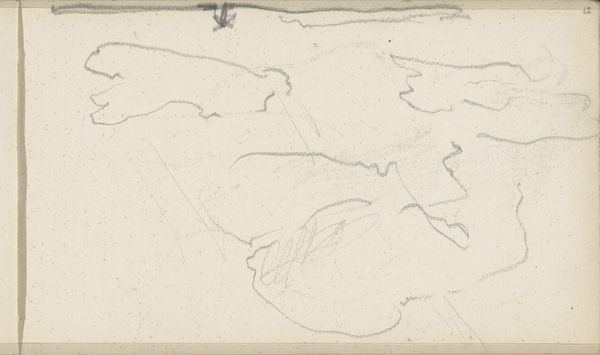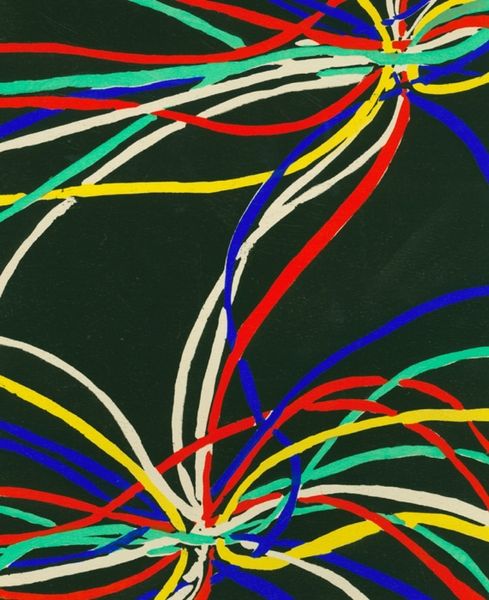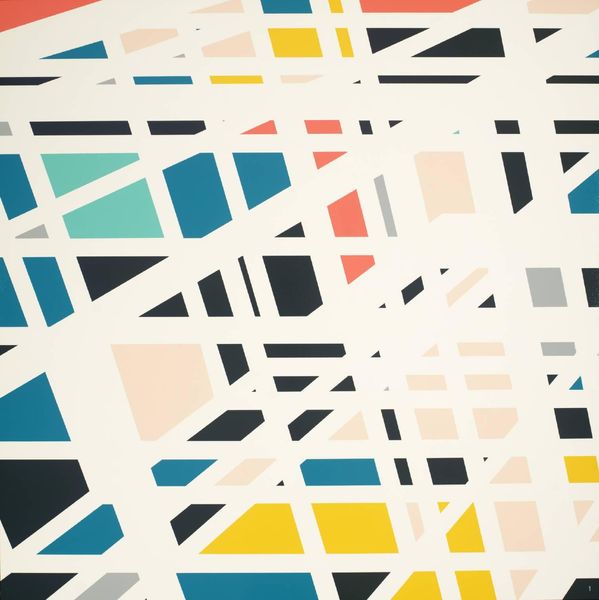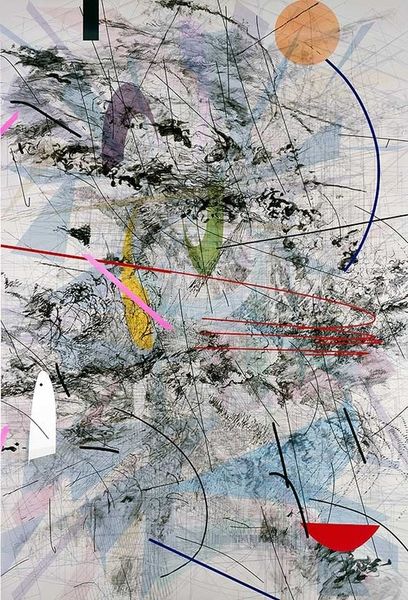
Copyright: Modern Artists: Artvee
Curator: Looking at Andy Warhol’s “U.S. Weather Map,” dating from around 1985-86, one is immediately struck by its unusual blend of acrylic paint, photography, and silkscreened elements. What’s your first impression? Editor: Energetic! That forceful layering of bright cyan slashes feels almost like an attempt to grapple with something ephemeral. But there is something simplistic about it; the lines and composition are rough. Curator: Exactly. Warhol repurposes the visual language of mass-produced, functional objects, questioning traditional notions of artistic labor. The use of a weather map, normally disseminated as an informative piece through newspapers, hints at his preoccupation with the daily circulation of information as a commodity. The acrylic slashes seem a knowing intervention to abstract its original functionality. Editor: I read it as a collision between the graphic precision of the map itself—the stark black lines defining state borders and weather patterns—and those sweeping gestural strokes, alluding to the unpredictable, fluid nature of weather itself. There is clear contrast in textures, as well, with screen-printing that allows for controlled lines, as against the acrylic paint that adds an irregular, dynamic layer over it. Curator: The photographic element, perhaps easy to miss at first glance, hints at Warhol’s broader exploration of reproducibility and the transformation of everyday imagery into art objects. Think about the assembly-line approach he adopted for screen printing—it underscores a focus on the social conditions that create such artwork. The stencil feels quite deliberate. Editor: For me, the stencils offer an insight into Warhol's semiotic strategy. How do recognizable symbols like ‘low’ or temperature gauges shift in meaning when rendered in this pop-art aesthetic? I find that juxtaposition incredibly compelling. It points to a playful engagement with recognizable imagery to make the common unfamiliar. Curator: Ultimately, I view "U.S. Weather Map" as an exploration of both the mechanics of image-making and the ways consumerism permeates daily life. Editor: And I see an artwork investigating those precise structural and chromatic relationships that challenge conventional expectations and provide, perhaps, a new way of visualizing an everyday artifact.
Comments
No comments
Be the first to comment and join the conversation on the ultimate creative platform.

